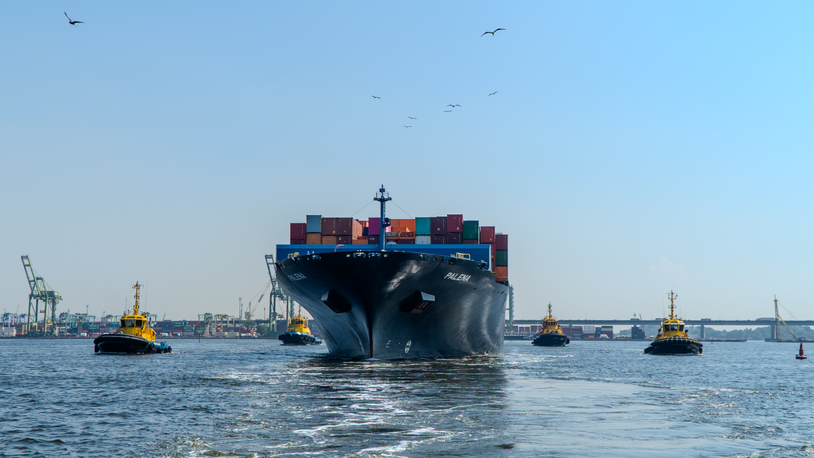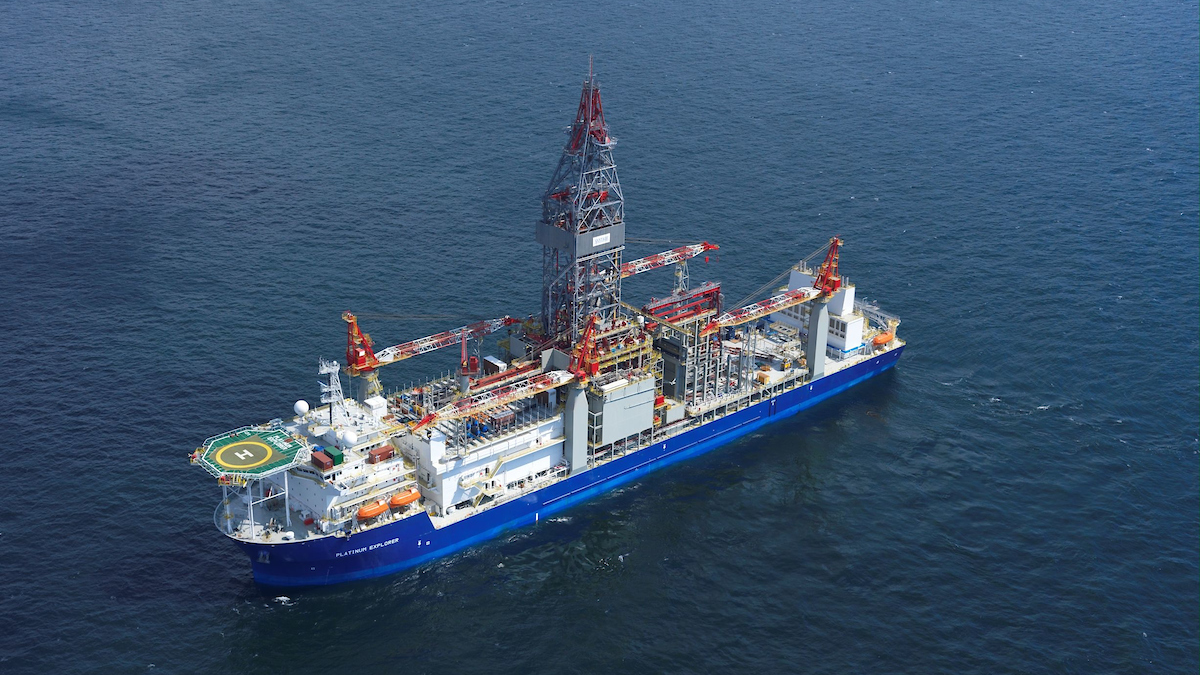Business Sectors
Events
Contents
Thruster evolution revolves around efficiency
If a couple of recently delivered offshore vessels had to be identified that highlight the importance of thrusters on offshore vessels, those vessels would surely have to be Viking Neptun, which was delivered to Eidesvik Offshore in Norway earlier this year, and the semi-submersible offshore accommodation vessels Posh Xanadu and Posh Arcadia, the first of which was delivered in January by PaxOcean Engineering of Zhoushan.
Each of the accommodation vessels will have no fewer than nine Brunvoll thrusters, including two AW100 azimuth propulsion thrusters located aft, two FU100 tunnel thrusters (one forward and one aft) and five azimuth retractable AR100 thrusters for manoeuvring – three are installed across the forward part of the vessel and the remaining two one each side aft. Between them, the thrusters have a total power output of 20,876kW. Now on long-term charter to Technip, Viking Neptun is the largest in Eidesvik’s fleet and the largest built by Kleven Verft in Norway. Designed by Salt Ship Design, the vessel is 145m long with a breadth of 31m and accommodation for 150 people. It has two main propellers from Wärtsilä (driven by a twin-in and single-out gearbox) and seven Brunvoll thrusters. The vessel has eight engines from Wärtsilä and a maximum speed of 17.2 knots.
In truth, however, the thrusters on these impressive vessels are fairly conventional units, whereas the focus of ongoing development efforts at manufacturers and on products launched in the last six months or so has been much more revolutionary.
Among the latest additions to the growing range of thrusters intended for main propulsion is ABB’s Azipod D, which adds to its portfolio of smaller podded propulsion systems such as Azipod C. The D range, which comes in various options with or without nozzles, was described at its launch as “an advance in gearless thruster technology that will maximise flexibility of a wide range of vessels such as offshore support vessels, increasing charter opportunities while lowering maintenance costs and cutting fuel consumption for a variety of missions”.
The podded propulsor is described as 25 per cent more fuel efficient than its predecessor and is available in power ranging from 1.6MW to 7MW. ABB claims its use can enhance propulsion efficiency when a vessel is in dynamic positioning (DP) mode. It can be adapted to fit varying hull shapes and incorporates a new air and water cooling system, helping reduce the thruster’s weight.
Rolls-Royce presented the latest addition to its range of thrusters at Nor-Shipping 2015 in Oslo, unveiling a new azimuth thruster powered by permanent magnet (PM) technology. The group already has PM-driven tunnel thrusters in its portfolio. Permanent magnet technology for thrusters is not unique to Rolls-Royce, however – Brunvoll, Schottel and Voith have also designed and built similar products, although most are rim drive variants without a central shaft.
The first application of PM technology for thrusters was on tunnel thrusters with a permanent magnet motor in a rim, which drives the propeller in the centre. The permanent magnet motor consists of two main parts – a stator that carries a number of electrical coil windings and a rotor fitted with a number of very strong permanent magnets. A rotating magnetic field is created by the stator, which interacts with the fields of the permanent magnets on the rotor and generates force to drag the rotor around, providing the mechanical power.
The launch of the azimuth thruster with PM drive follows a programme of sea trials in which a pair of thrusters demonstrated efficiency savings of 7–13 per cent depending on ship speed and in comparison to azimuth thrusters powered by a conventional diesel-electric system. The trials took place on the research vessel Gunnerus, the Norwegian University of Science and Technology (NTNU) research ship, based in Trondheim.
Helge Gjerde, Rolls-Royce’s senior vice president for propulsion, commercial marine, said the performance of the thruster had exceeded the company’s expectations in terms of efficiency. “The sea trials are continuing, but initial findings have significant implications. PM thrusters will become a valuable supplement to conventional thruster technology,” he said.
Apart from improved fuel economy, other benefits of the PM-driven azimuth thruster include more power through a propeller of the same diameter, reduced noise and vibration and scope to remove and maintain PM thrusters without the need for drydocking.
The trials on Gunnerus follow operation of Rolls-Royce’s first commercial permanent magnet tunnel thruster by Olympic Shipping, the Norwegian offshore vessel operator. The tunnel thruster, now in operation onboard Olympic Octopus, a multifunction anchor-handling tug/supply vessel of Rolls-Royce UT 712 L design, has clocked up more than 4,000 trouble-free running hours.
Another recent arrival in the offshore sector is the Voith Linear Jet (VLJ) propulsion system. Successful tests on the VLJ were carried out off the Isle of Wight in the UK at the end of 2014. VLJs were selected as the main propulsion system on the 21m catamaran Trearddur Bay, which was designed for Holyhead Towing Company subsidiary Turbine Transfers by BMT Nigel Gee.
The VLJ is a new type of propulsor combining the best properties of conventional propellers with the best properties of conventional waterjets. At first sight, it looks to be a conventional propeller housed inside a nozzle, but it actually comprises a fully submerged custom-shaped deceleration/acceleration nozzle with a stator section aft of the rotor. The stator section cancels rotor-induced swirl and through that optimises the acceleration of the jet stream and the rudder inflow. The submerged position eliminates the requirement for a long inlet tunnel resulting in linear inflow and outflow and low marine growth sensitivity. The resulting benefits of this are increased efficiency and reduced noise and vibration levels.
The crew transfer vessel the system was tested on will take service technicians to offshore windfarms at sites all around Europe, initially at the Westernmost Rough site off the Humber for Dong Energy. The craft has achieved a trials speed of 30 knots – above expectations when compared to 26.5 knots for a near sister with jet propulsion. The efficiency of the VLJ would allow the craft to achieve the economical service speed of 25 knots required by Turbine Transfers even if the currently installed 10-cylinder 900kW engine was replaced with an 8-cylinder 720kW unit.
“The vessel is achieving more thrust at high speeds and when stopped in the water and pushing on a turbine than with conventional systems while achieving significantly lower noise and vibration levels,” said Alistair Knowles, a marine superintendent at Turbine Transfers. “It also adds to our green credentials through substantial fuel and emissions savings in our operations.”
VLJs are expected to be of interest in the workboat sector, the fast ferry and military and para-military markets. They are also expected to have potential applications on yachts and superyachts. In broad terms, the new propulsion system’s key benefits are lower fuel burn than vessels with waterjets or propellers. The high efficiency of the VLJ over a wide speed range means that, at 25 knots – where waterjets are not particularly efficient – the VLJ is significantly better. For vessels with fixed pitch propellers, power density becomes an issue above 30 knots, whereas the VLJ can be used for speeds of up to 40 knots without any such issues.
Other recent additions to the growing range and type of thrusters include the Verhaar Omega V-POD, an electric propulsion/manoeuvring system that can replace a conventional screw shaftline with rudder. The V-POD is a pod drive with electric motor in an underwater housing. It can be used in combination with a diesel-electric and LNG-electric generator set and is said to have a high level of propulsion efficiency. The company says it overcomes some of the disadvantages of existing pod drives, such as high costs and low efficiency. It is also designed to be easy to install and occupies a minimum of space. Depending on the application, it is available as a pushing or pulling design and can be supplied with or without a nozzle.
Wärtsilä recently passed the final step in securing type approval from Lloyd’s Register for its new WTT11 tunnel thruster. The WTT11 thrusters are electrically driven and can be delivered with a controllable pitch or fixed pitch propeller. Late last year, the company secured approval from classification society DNV GL for the design of its WST-14 thruster, which is part of the Wärtsilä steerable thruster (WST) compact series aimed primarily at tugs, anchor-handling vessels and coastal and inland waterway cargo vessels. The key benefits of the series include superior performance, easy installation, a high level of integration and ice class compatibility.
Article published in the Guide to OSV Propulsion, a supplement to Offshore Support Journal
Related to this Story
Events
Maritime Environmental Protection Webinar Week
Cyber & Vessel Security Webinar Week
The illusion of safety: what we're getting wrong about crews, tech, and fatigue
Responsible Ship Recycling Forum 2025
© 2024 Riviera Maritime Media Ltd.












